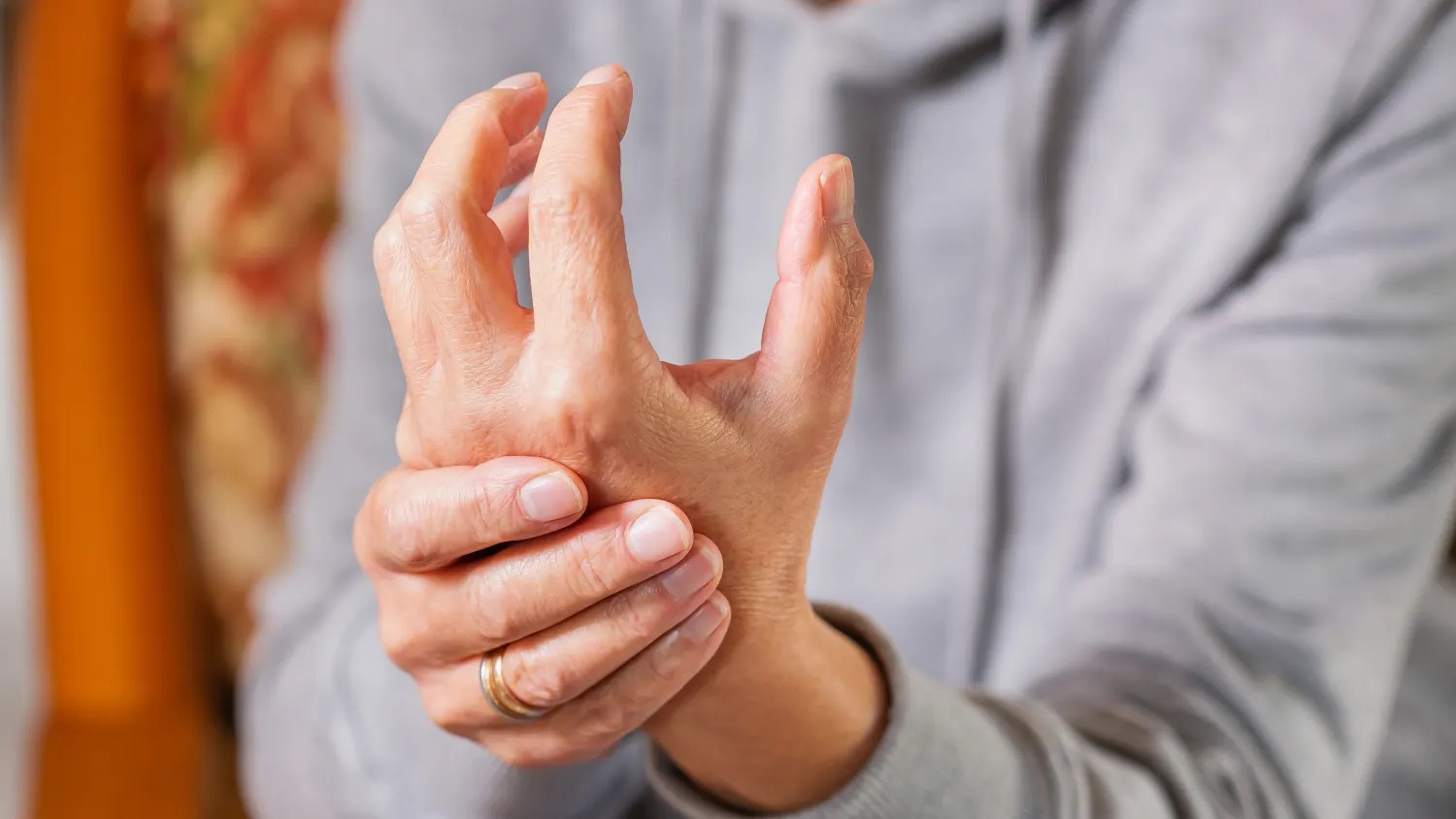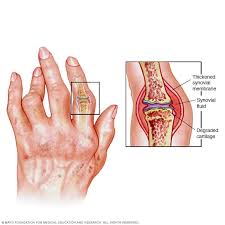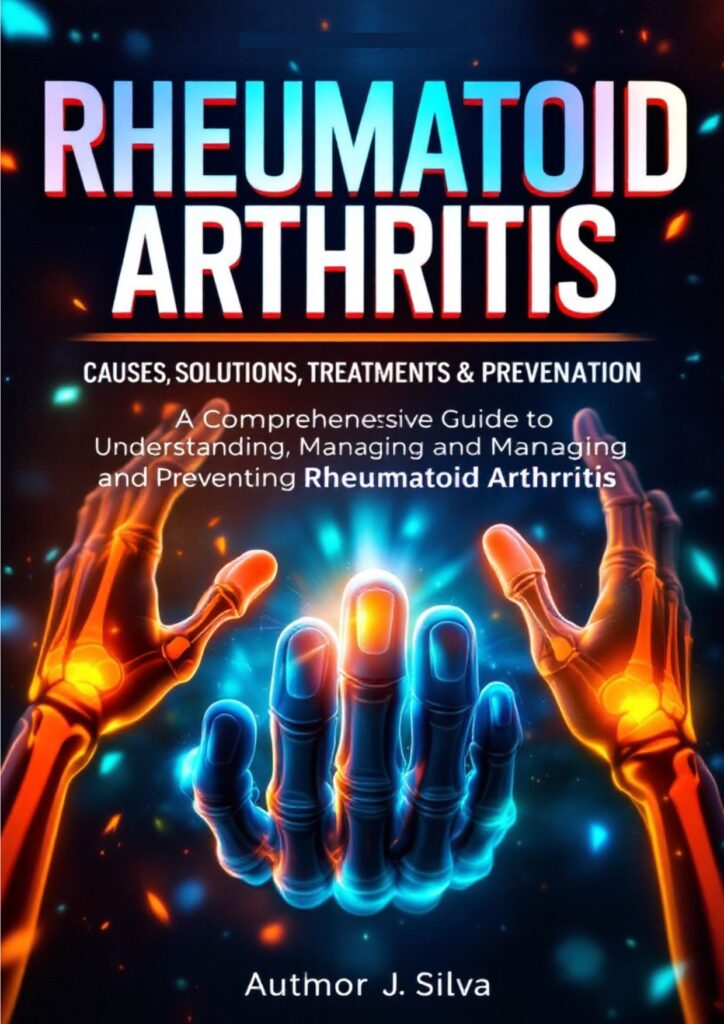
Introduction
Rheumatoid arthritis (RA) is a chronic autoimmune disorder that affects millions of people worldwide. Unlike osteoarthritis, which is caused by wear and tear, RA occurs when the immune system mistakenly attacks the body’s own tissues, primarily the joints. Understanding rheumatoid arthritis symptoms, available treatments, and preventive strategies is essential for managing this debilitating condition effectively.

This guide will cover everything from early signs of rheumatoid arthritis to advanced rheumatoid arthritis treatment, helping you or your loved ones take proactive steps in managing RA.
What is Rheumatoid Arthritis?
Rheumatoid arthritis (RA) is a systemic autoimmune disorder characterized by inflammation of the synovium—the lining of the joints. Chronic inflammation can cause joint pain, swelling, stiffness, and eventual deformity, often affecting both sides of the body symmetrically.
Commonly Affected Areas
- Small joints of the fingers and wrists
- Knees and ankles
- Occasionally larger joints such as the shoulders and hips
Unlike osteoarthritis, RA is caused by the immune system attacking healthy joint tissue, producing enzymes that destroy cartilage and bone. This autoimmune response can also affect other organs, making RA a systemic disease.
Early Signs of Rheumatoid Arthritis
Recognizing the early signs of rheumatoid arthritis is crucial for preventing joint damage. Common early symptoms include:
- Persistent joint pain and tenderness, especially in fingers and wrists
- Morning stiffness lasting more than 30 minutes
- Swelling, warmth, or redness around affected joints
- Fatigue, low-grade fever, and general malaise
- Symmetrical joint involvement
Suggested Image: Photo of hands showing early RA swelling
Alt Text: Early signs of rheumatoid arthritis in fingers and wrists
Rheumatoid Arthritis Symptoms
Symptoms vary from person to person. Some experience mild discomfort, while others face significant pain and loss of function. Key RA symptoms include:
Joint-Related Symptoms
- Arthritis in fingers: Pain and swelling in finger joints affecting daily tasks
- Pain in wrists, elbows, knees, and ankles
- Joint deformity from chronic inflammation
- Symmetrical involvement of joints
Systemic Symptoms
- Fatigue due to chronic inflammation
- Low-grade fever
- Weight loss in advanced RA
Other Signs of RA
- Rheumatoid nodules under the skin near joints
- Dry eyes or mouth (Sjogren’s syndrome)
- Lung and heart complications in severe cases
Causes of Rheumatoid Arthritis
RA develops due to a combination of genetic, environmental, and hormonal factors.

Genetic Factors
People with the HLA-DR4 gene have a higher risk of developing RA.
Environmental Triggers
Factors such as smoking, infections, and pollution may trigger RA in genetically susceptible individuals.
Hormonal Influence
RA is more common in women, especially during childbearing years, suggesting hormones play a role.
Immune System Dysfunction
RA occurs when the immune system attacks the synovial membrane, leading to chronic inflammation.
Understanding Juvenile Rheumatoid Arthritis
Early Detection and Care for Children
Juvenile rheumatoid arthritis (JRA), also known as juvenile idiopathic arthritis, is an autoimmune condition that affects children under the age of 16. Like adult rheumatoid arthritis, JRA occurs when the immune system mistakenly attacks the body’s joints, causing pain, swelling, stiffness, and reduced mobility. Early detection is crucial, as timely treatment can prevent joint damage and support normal growth and development. Symptoms often include persistent joint pain, morning stiffness, fever, and fatigue, and the disease can affect one or multiple joints. Management typically involves medications, physical therapy, lifestyle adjustments, and regular monitoring by pediatric rheumatologists to ensure the child maintains an active, healthy life.
Rheumatoid Arthritis Treatment Options
There is no cure for RA, but rheumatoid arthritis treatment focuses on symptom management, slowing disease progression, and improving quality of life.
1. Medications
- DMARDs: Methotrexate, sulfasalazine, hydroxychloroquine
- Biologics: Adalimumab, etanercept, infliximab
- NSAIDs: Reduce pain and inflammation
- Corticosteroids: Control acute inflammation
2. Physical Therapy and Exercise
Low-impact exercises such as swimming, walking, and yoga improve mobility. Occupational therapy teaches adaptive techniques for daily activities.
3. Lifestyle Modifications
- Anti-inflammatory diet (fatty fish, leafy greens, berries)
- Weight management to reduce joint stress
- Stress management through mindfulness and meditation
4. Surgery
Severe joint damage may require joint replacement or synovectomy to restore function and reduce pain.
Preventing Rheumatoid Arthritis
While RA cannot always be prevented, you can reduce risk through:

- Quitting smoking
- Eating an anti-inflammatory diet
- Regular exercise to strengthen muscles
- Monitoring early signs
- Routine medical checkups
Rheumatoid Arthritis in Fingers
RA often starts in the small joints of the fingers, leading to:
- Pain and tenderness at knuckles
- Difficulty gripping objects
- Morning stiffness
- Redness or warmth over joints
Boost Your Joint Health with JointVive
A Unique Solution for Comfort, Flexibility, and Mobility
For those looking for extra support in managing joint discomfort and maintaining mobility, JointVive can be a game-changer. Unlike anything else on the market, JointVive is crafted from a unique blend of rare, hard-to-source ingredients designed to help support joint comfort, flexibility, and overall mobility. Combined with proper lifestyle habits and RA management strategies, JointVive may provide the additional boost your joints need to stay active and pain-free. 🌟 Don’t wait—take control of your joint health today! Click here to get JointVive now and start feeling the difference.
Early detection in fingers allows for prompt treatment and prevents permanent deformities.
Identifying Signs of Rheumatoid Arthritis Early
Recognizing signs of RA early is crucial for effective treatment:
- Morning stiffness lasting more than 30 minutes
- Symmetrical joint pain
- Swelling, redness, warmth around joints
- Fatigue and low-grade fever
Doctors may use blood tests for rheumatoid factor (RF) and anti-CCP antibodies, along with X-rays or ultrasounds, to confirm the diagnosis.
Living with Rheumatoid Arthritis
RA is chronic but manageable. Long-term strategies include:
- Daily low-impact exercise
- Stress reduction through counseling and mindfulness
- Support groups for emotional well-being
- Monitoring symptoms to prevent flare-ups
Suggested Image: Active lifestyle with RA
Alt Text: Maintaining an active lifestyle despite rheumatoid arthritis
Common Misconceptions About RA
- RA is the same as osteoarthritis – FALSE
- RA only affects older adults – FALSE
- Exercise worsens RA – FALSE
Correct understanding empowers patients to manage their condition effectively.
📘 Get Your Ultimate Guide to Rheumatoid Arthritis Now!
Are you struggling with rheumatoid arthritis or worried about the early signs of RA? Don’t wait until the pain gets worse! Our comprehensive eBook, Rheumatoid Arthritis: Causes, Solutions, Treatments & Prevention, is your complete guide to understanding RA, managing symptoms, and preventing joint damage.
Inside this eBook, you’ll discover:
- Detailed explanations of rheumatoid arthritis symptoms and RA symptoms
- Proven strategies for rheumatoid arthritis treatment
- How to recognize early signs of rheumatoid arthritis before serious damage occurs
- Lifestyle tips, exercises, and diet plans for arthritis in fingers and other affected joints
- Expert advice for living a healthy, active life with RA
🔥 Don’t let rheumatoid arthritis control your life! Take the first step towards relief and empowerment.
👉 Click here to get your eBook now!
Why you need this eBook:
- Easy-to-understand language, perfect for anyone dealing with RA
- Actionable solutions and preventive measures you can implement today
- Professional, science-backed guidance from experts in autoimmune health
Take control of your health—get your copy today and start managing your RA like a pro!
Conclusion
Rheumatoid arthritis requires early detection, comprehensive treatment, and lifestyle management. By understanding RA symptoms, recognizing early signs of rheumatoid arthritis, and following appropriate rheumatoid arthritis treatment plans, patients can improve their quality of life and maintain joint function. Awareness of arthritis in fingers and systemic symptoms helps in taking timely action, allowing individuals to live active, fulfilling lives despite RA.
SEE ALSO: Glutamina: 7 Benefícios Para Saúde e Desempenho Físico
Disclaimer: This article is for informational purposes only and does not replace the advice of a healthcare professional. Consult a doctor or nutritionist before starting any supplementation. Some links in the text are affiliate links, which means we may receive a commission if you make a purchase. This does not impact the price for you and helps us continue to provide quality content.


